Blogs
Our Articles
Our Latest Blog
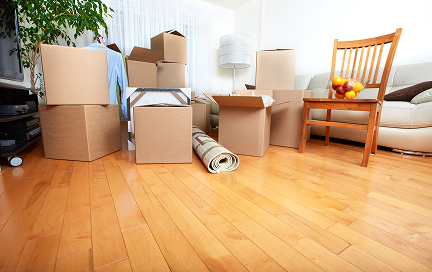
03 Jun, 2025
Ultimate Furniture Removal Checklist for Hybrid Work-from-Home Moves
Use this ultimate furniture removal checklist to simplify your hybrid work-from-home move. Expert suggestions from removalists to reduce downtime and safeguard your workstation.
“In 2022, about 48% of Australians worked from home on a regular basis, and that number is only going up.”
When hybrid work becomes a way of life, moving isn't just about moving things; it's also about keeping productivity up and making the least amount of noise possible.
Introduction: Hybrid Life, Hybrid Challenges
Let's be honest: no one ever liked moving. Things get much more complicated when your house is also your office. Now, it's not simply about moving your furniture from one place to another. It's about keeping your work flow going, protecting your expensive hardware, and setting up your home office without missing a Zoom meeting or deadline. That’s where this checklist comes in. This information was made just for people who work from home or in a hybrid setting and are moving to a different part of Melbourne. This book is full with useful information, whether you're a single professional moving to a new suburb or a family with two work-from-home setups and kids who need to go to school. We'll guide you through every important step, help you avoid common mistakes that can slow down your work, and give tips from professional furniture movers in Melbourne.Why Hybrid Work Moves Need a Different Approach
Moving in the era of hybrid work isn't only about moving couches and kitchenware; it's also about keeping your productivity going and keeping things from becoming too messy. If you work from home or in a hybrid setting, your home is no longer merely a place to live. It's your meeting room, creative space, productivity pod, and everything else in between. That's why regular relocation checklists don't work. You need a plan that goes beyond logistics. It should also include how to set up your home office, how to protect your delicate equipment, how to get electricity and internet, and how to be online quickly with as little downtime as possible. If you're relocating within the city or to a different suburb, working with experienced furniture removalists in Melbourne that know how to balance everything can make a big difference. They will not only move your things, but they will also help you keep your professional rhythm going without missing a beat. This blog post will show you how to plan, pack, move, and set up your hybrid office in the most effective way possible. Let’s dive into the ultimate checklist.Step 1: Audit Your Work-From-Home Setup
Before you hire a mover, figure out what you're really moving, especially if it's your work area. Key things to document:- Tech Inventory: Laptops, monitors, routers, printers, backup drives, etc.
- Furniture Essentials: Ergonomic chairs, desks, storage units.
- Connectivity Needs: Modems, NBN connection points, powerboards.
- Noise & Lighting: Does your current setup rely on a particular window or quiet corner?
Step 2: Declutter with a Purpose
People who work from home often get more than they realise. That printer from 2018? Those old chairs for the office? It's time to streamline. Sort into:- Keep & Move
- Donate
- Sell
- Recycle/Dispose
Step 3: Choose the Right Removalist for Hybrid Moves
Not every mover is ready for the new world of mixed work. You need a removalist who knows how to move both homes and offices and is willing to work around your schedule. What to look for:- Experience with delicate electronics
- Flexible time slots (evening or weekend moves)
- Capacity to handle tech equipment and big furniture
- Optional packing and unpacking services
Step 4: Create a Hybrid Moving Timeline
Plan your move in stages so that you don't have to stop working. Here's an example of how to break down a timeline:| Timeframe | Task |
| 4 Weeks Before | Book movers, audit workspace, notify landlord if renting |
| 3 Weeks Before | Declutter, order packing materials |
| 2 Weeks Before | Start packing non-essentials (books, décor) |
| 1 Week Before | Pack up secondary tech (spare monitors), label everything |
| 2 Days Before | Dismantle desk setup, take backups |
| Moving Day | Keep work gear in a clearly labelled priority box |
| Next Day | Set up your new hybrid workspace first, before unpacking the rest |
Step 5: Protect Your Work Essentials
This isn’t just your home—it’s your livelihood. Packing tips:- For electronics, use bubble wrap that doesn't attract static electricity.
- Place the cords in labelled zip-lock bags and attach them with tape to the corresponding object.
- For computers and other delicate gear, use hard plastic bins instead of cardboard. They are significantly safer.
- Store backups of your data on a different drive or in the cloud.
Step 6: Prepare the New Workspace First
Don't wait until all the boxes are empty. As soon as your removalist brings your things, make your hybrid work setup your top priority. Your Day-One Setup List:- Desk and chair
- Laptop/PC and monitor
- Powerboard and surge protectors
- Router & modem
- Desk lighting
- Office supplies (notepad, pens, charger cords)
Bonus: Communicate with Your Employer
Hybrid doesn’t mean invisible. Let your employer or clients know about the move in advance. What to communicate:- Dates you may be offline
- Alternative contact methods
- Whether you’re moving interstate or just suburbs
Consider Professional Packing and Disassembly
Want to save time (and your back)? Use services that pack, take apart, and put back together things, especially your home office furniture. Many moving companies provide these as bonuses. It's worth the money if you're moving big desks, wall-mounted displays, or complicated modular systems.Local Tip: Choose Removalists Familiar with Your Area
Logistics in the suburbs are important. A mover that knows how to park, get about, and get to your suburb can save you a lot of time. Selecting local knowledge is not only simple, but also smart.Ultimate Hybrid Work Move Checklist
Here’s a quick-glance version of everything covered: Planning- Audit home-office items
- Book experienced hybrid-friendly removalists
- Create a detailed moving timeline
- Declutter with intent
- Safely pack tech and office furniture
- Label work boxes “PRIORITY”
- Backup all important files
- Keep work essentials with you if possible
- Direct removalist to place office items in final position
- Set up work area before unpacking the rest
- Test internet and power
- Resume work with minimal downtime
Conclusion: Move Smart, Work Smarter
In a hybrid work world, your home isn't simply a safe place to be; it's also where you get things done. A relocation that isn't planned might lead to lost time, extra stress, or even worse, broken equipment. That's why you need more than simply strength. You need experienced movers who know how to deal with hybrid work and can work around your schedule, your technology, and your career. You can get back online, feel well, and be productive in no time with this checklist and a trustworthy team like Saresa behind you.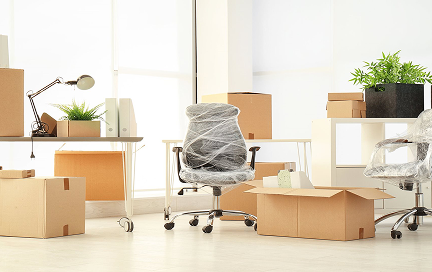
07 Jul, 2025
Moving Made Easy: Room-by-Room Declutter and Packing Tips
Declutter and pack room-by-room like a pro with this ultimate moving guide. Expert tips from trusted Melbourne movers to help you move smarter—not harder.
"Moving house is still one of the most stressful things in life, along with divorce and changing jobs. On average, Australians relocate every five years."
Let's be honest: moving is almost never easy. You have good intentions when you say, "we'll pack early, stay organised, and label everything." Two weeks later, there are open boxes, tangled cords, and mounds of things you forgot you had all about you. Is it stressful? For sure.
But it doesn't have to be. You can make the moving process run smoothly by having a plan and taking things room by room. This guide, which is based on advice from our professional house movers in Melbourne, will help you get rid of things you don't need, pack quickly, and move with confidence, whether you're moving a family home or a one-bedroom apartment.
Let's get started and do it room by room.
Why the Room-by-Room Method Works
People often make the mistake of trying to do everything at once. Going from the kitchen to the garage to the bedroom makes you tired and leaves a lot of boxes unfinished. Instead, a concentrated, room-by-room packing plan helps you:- Manage time better
- Avoid duplicate or unnecessary packing
- Prioritise what truly matters
- Stay organised throughout the move
Planning Ahead: The 4–6 Week Timeline
Get going early. Try to start packing and getting rid of things at least four to six weeks before you move. Start with the places you utilise the least and work your way up to the more important ones. If you give yourself extra time, you're less inclined to throw things into boxes in a frenzy the night before. Some helpful milestones are:- Week 6: Make a list of things to do before you move and get packing supplies.
- Week 5: Begin with extra rooms and storage areas.
- Week 4–3: Go to the bedrooms, closets, and books.
- Week 2: Pay attention to the kitchen and living room
- Final Week: Only pack the things you need immediately away, like your bathroom goods, fridge items, and clothes.
Decluttering & Packing the Bedroom
The bedroom is a great place to start because it usually has clothes and other personal things that haven't been used in years. What to Declutter:- Clothes you haven't worn in a year
- One sock, broken hangers, and ancient linens
- Drawers full with "just in case" stuff that is messy
- To save space, vacuum seal blankets and garments for the season.
- Use suitcases for shoes and heavier folded goods.
- Put labels on boxes for the season or the purpose, like "Winter Jumpers" or "Bedside Essentials."
Packing the Kitchen Without Breaking a Thing
Packing up the kitchen takes the most time. There are a lot of things to deal with, from fragile plates to small utensils. What to Declutter:- Spices and food that have gone bad in the cupboard
- Additional equipment and tools that you don't use frequently
- Cookbooks that you haven't used in a long time
- Plates should be stacked with padding between them, much like records.
- Use towels, napkins, and bubble wrap to keep glasses and mugs safe.
- To keep spice jars and containers from spilling, tape the lids shut.
- When you can, use the original boxes for your appliances. If you can't, wrap them snugly in foam or blankets.
Streamlining the Bathroom
Even though bathrooms are small, they can hold a lot of stuff. What to Let Go Of:- Old cosmetics and medicines
- Lotions, shampoos, or styling items that are just half-used or broken
- Things you haven't used in months
- Use zip-lock bags for liquids so they don't spill.
- Store your everyday essentials in a transparent pouch for convenient access.
- If you have more than one bathroom, put them in separate boxes.
- Put socks or hand towels around fragile things like mirrors or perfume bottles.
Home Office: Where Chaos Hides in Cables
Home offices can be hard to work in because of all the electronics and papers. But if you properly classify it, it becomes easier to manage. What to Toss:- Old papers that you've already backed up
- Pens that don't work, wires that are all twisted up, or chargers that are the same
- Instructions for appliances you don't possess anymore
- Before unplugging, label the cords (with masking tape or cable tags).
- Before moving computers, make a backup.
- Cover the monitors with soft material or blankets.
- Keep a folder containing important papers including leases, IDs, and receipts for relocating close by.
Packing Up the Living Room
There are big pieces of furniture, breakable things, and tech in the living room, and each needs a different way to be packed. Declutter First:- Recycle old periodicals, DVDs, and decorations you don't use.
- Give away spare blankets or toss pillows.
- Get rid of broken accessories or obsolete remote controls.
- To wrap breakable items, use packing paper or heavy towels.
- Take the legs off of furniture to keep it from getting dings and scratches.
- Use their original boxes or foam wrap to keep TVs safe.
- To keep your sofa cushions and upholstery clean, use stretch wrap.
Tackling the Garage and Shed
People often put things they don't want to deal with in the garage till later. It's time to be tough now. Let Go Of:- Tools you haven't used in more than two years
- Paint that is still there, empty gasoline cans, and pesticides for the garden
- Sports equipment or seasonal decorations that are broken
- Put heavy things like tools and hardware in plastic tubs.
- Clearly mark what is inside and mark things that are sharp or delicate.
- Put bubble wrap or cardboard around sharp equipment.
Packing Hacks and Organisation Tips
To make a seamless motion, you need to work smarter. These ideas can help you stay on track with your move, save you time, and lower your stress:- Tape or markers in different colours for each room
- Put a label on at least two sides of each box so you can find it quickly.
- Place light items on top and heavier items on the bottom.
- Use the laundry baskets, bags, and storage bins you already have.
- Before unplugging electronics, take pictures of them so you can remember how to plug them back in.
What Should You Pack Last?
The last 24 hours before you move? That's for the basics only:- Bedding and linen
- Phone chargers, medications, and toiletries
- Food and fridge contents
- Work-from-home supplies
- Kids’ or pet items
- Moving folder with documents and checklist
When to Hire Professional Movers
Some folks really like doing things themselves. Some people know that some jobs are best left to experts. When to call in the experts:- You're transporting stuff that is fragile or old.
- There are stairs, elevators, or narrow entrances.
- You don't have much time to work.
- You don't want to create harm or be harmed.
Final Thoughts: The Stress-Free Move Is Real
It doesn't have to be crazy to move. The whole process gets easier—and even empowering—when you declutter strategically, pack with purpose, and work room by room. This blog will help you stay calm, organised, and ready for the next chapter, whether you're moving into your first flat or moving up to a family home. And if you want to make the move easier, let Saresa help you out. We're the specialists in Melbourne for moving homes, and we're just a phone call away when you're ready to relocate.Trending Topics & Angles
- "Smart Moving" with Technology & Apps (2025) – Highlight new apps/tools for inventory, coordination, and truck tracking raythemover.net.
- Eco-friendly Packing & Sustainability – Cover biodegradable boxes, reusable bins, decluttering with charity/donation architecturaldigest.com+2raythemover.net+2reddit.com+2.
- Cost-saving Strategies During Peak Season – Compare weekend vs mid-week moving, utility transfer timing, sourcing free packing materials thesun.co.uk.
- Packing & Moving Furniture & Appliances Safely – Best practices for dismantling, wrapping, padding, using dollies, securing appliances sarasotasunshinemovers.com+12libertymoving.com+12clancymoving.com+12.
- Expert Advice for Stress-free Moves – Timeline planning (6–8 weeks), room-by-room declutter, front-door essentials bag, socket labeling livingetc.com+4theguardian.com+4capitalcitymovers.us+4.
- Decluttering & Grouping by Emotional Weight – Focus on low-emotion rooms first (kitchen, bathroom), applying the one‑year rule capitalcitymovers.us+2theguardian.com+2thespruce.com+2.
- Moving-Day Survival Kits – Assembling essentials (toiletries, snacks, chargers, meds) for the first night in a new home whatremovals.co.uk+15raythemover.net+15mymovingjourney.com+15.
- Avoiding Moving Scams & Hidden Fees – Educate about red flags: upfront deposits, vague lowball estimates, undisclosed charges reddit.com+15mashmovers.com+15lifestyle-moving.com+15.
- Protecting Your Furniture & Home – Furniture sliders, moving blankets, corner protectors, socket labeling thespruce.com+11mymovingjourney.com+11capitalcitymovers.us+11.
- Preparing Appliances for Moving – Defrosting fridges, securing loose parts, safe transportation protocols .
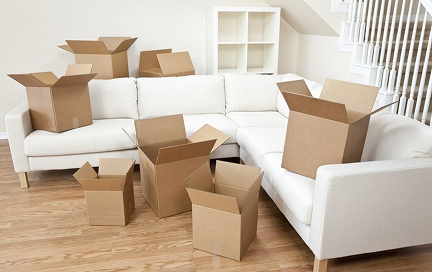
14 Jul, 2025
Moving Furniture & Appliances Without Damage: Safety Practices
When moving furniture or appliances, be careful to avoid damage and injuries that might cost a lot of money. Reliable house movers in Melbourne can teach you how to keep safe.
"Almost half of all Australians have moved at least once in the last five years." And every time you move, you have to deal with the same problem: how can you move heavy furniture and big appliances without hurting them or yourself?
If you move a heavy fridge, a delicate glass cabinet, or a three-seat chair the incorrect way, you could scrape the floors, break the walls, or even have to go to the doctor. Our professional movers in Melbourne have seen and done it all at Saresa. This blog will show you tried-and-true safety tips that will help your move go smoothly, quickly, and without any harm.
Why Safe Furniture & Appliance Moving Matters
Moving accidents are not only annoying, but they also cost a lot of money. It can cost hundreds of dollars to fix scratches on glossy wood floors, dents in a stainless steel fridge, or damaged corners on handcrafted furniture. More importantly, lifting or moving things the wrong way might hurt your health. When safety is not taken into account, injuries from moving large things are all too prevalent. These can include herniated discs and strained shoulders. Safe handling is important for everyone, not just experts, when they move. These tips will keep your things, your home, and your body safe, whether you hire someone to help you or do it yourself.Essential Steps for Moving Furniture and Appliances Safely
Step 1: Preparation is Everything
Before you lift a single box, you need to get ready for a safe relocation.Inventory and Plan Ahead
Make a list of all the appliances and furniture you own. Find out which items are too big, too heavy, or too fragile. Make a strategy for how you'll deal with each one, including what has to be taken apart, packaged, or protected. Use a basic list: take apart, wrap, protect, move, and load.Clear Pathways
Check the sizes of your hallways and entrances to be sure things will fit. Get rid of any carpets, shoes, or lights that are hanging down low that might get in the way. If you need to, schedule elevators ahead of time when you move into or out of an apartment.Step 2: Disassembling Furniture Properly
Moving big items is safer and easier when furniture is disassembled.- Take the legs off of tables and couches.
- Break down bed frames and bookshelves.
- Remove the drawers from the consoles and dressers.
- Put all the screws, nuts, and bolts in bags and label them.
Step 3: Packing & Wrapping Furniture Safely
Bad packing is often to blame for scratches, dents, and chipping. This is how to avoid that:- Wrap furniture all the way around with moving blankets.
- Cover the corners with cardboard or foam protectors.
- Cover glass or mirrored surfaces with bubble wrap and tape them down with packing tape.
- Use stretch wrap to keep blankets, pillows, or drawers from moving about.
Step 4: Preparing Appliances for a Safe Move
You need to be particularly careful while moving big equipment like refrigerators, washing machines, or ovens.- Fridge/Freezer: Let it thaw for at least 24 hours. Make sure to clean and dry well. Use tape or rope to keep doors shut.
- Washing Machine: empty all the water and unplug the hoses. Use the provided transit bolts to maintain the drum's stability.
- Dishwasher: Take out any loose pieces or racks within. Put tape on the door.
- Oven/Microwave: Clean the oven and microwave well. Take off any parts that can be removed and tape the doors shut.
Step 5: Use the Right Equipment
The right tools can make a heavy lift feel effortless. Tools you’ll need:- Furniture dollies (flat platform with wheels)
- Hand trolleys (great for appliances)
- Lifting straps or forearm forklifts
- Furniture sliders for hardwood or carpet
- Gloves for grip and protection
Step 6: Safe Lifting Techniques
When moving heavy furniture, the most typical concern is hurting your back. Use the right way to lift:- Use your legs to raise instead of your back.
- Bend your knees and keep your back straight.
- Don't twist your body; turn your feet.
- When moving big or heavy things, always work as a team.
- Keep the load near to you.
Step 7: Loading the Moving Truck
How you load your truck is important.- Put the appliances in first, against the rear wall.
- Put the heaviest pieces of furniture on the floor, close to the cab.
- Give each side the same amount of weight.
- Use tie-downs or movable straps to keep everything in place.
- Put fragile or light things on top.
Local Expertise: Furniture Movers in Melbourne
We know that each area in Melbourne has its own problems, such tiny terraces in Maribyrnong, steep access in Tarneit, and restricted driveways in Yarraville. Our teams know how to deal with every situation with care. People in Yarraville already trust furniture removalists to aid them with big moves or sensitive items. Or maybe you want to find trustworthy movers in Maribyrnong who can get around those hard-to-navigate streets in the inner west. No matter where you're moving, we've got Melbourne covered.Common Mistakes to Avoid
Even if you plan everything perfectly, tiny mistakes might cause enormous problems on moving day. Here are the most typical mistakes people make when moving furniture and appliances, along with tips on how to prevent them to help your move go more smoothly and safely:Skipping Disassembly of Larger Items
Pushing big furniture through confined spaces can hurt people and break things. Take apart things like mattresses and tables whenever you can.Using Cheap or Inadequate Packing Materials
Low-quality boxes and tape can collapse or tear mid-move. Always use strong, reliable materials to protect your belongings.Overloading Boxes or Exceeding Dolly Weight Limits
During a move, cheap boxes and tape can break or tear. Always use materials that are robust and reliable to keep your things safe.Putting Too Much Weight In Boxes Or On A Dolly
It's hard to lift heavy crates, and they can break open. Spread the weight out evenly and don't go above the equipment's limits.Lifting by Yourself Without Asking for Help
Lifting things alone can hurt your back and make you drop things. When lifting big or awkward things, use team lifts.Not properly securing things in the truck
Things that aren't secured can slide around and shatter when they're being moved. Use ropes or straps to hold everything in place.Forgetting to Check Appliance Manuals for Moving Instructions
Moving instructions are often included in appliance manuals. If you skip them, you could harm something or void the warranty.Final Safety Tips Before the Big Day
- Keep a first aid kit nearby
- Wear closed-toe shoes and gloves
- Hydrate and take breaks
- Supervise kids or pets so they’re not in the moving path
- Have emergency contacts saved on your phone
When to Call Professional Movers
Even with the finest planning, some movements are just too hard or dangerous to do on your own. If you're having to cope with:- High-value or antique furniture
- Heavy whitegoods on stairs
- Tight entryways or sharp corners
- A full home move on a tight schedule
Conclusion: Move Smart, Not Hard
Moving doesn't have to be a mess, hurt people, or break furniture. You can keep your things safe and your back healthy if you prepare ahead, have the correct equipment, and handle them safely. Not sure where to begin? Let Saresa's team do the hard work for you. Families in Melbourne trust us to transport their furniture safely and without harm.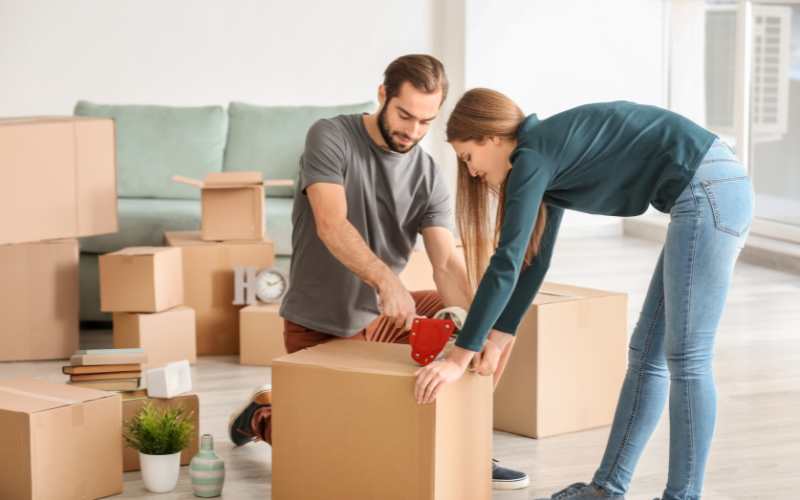
06 Aug, 2025
How to Plan a House Move When You Both Work Full-Time
Moving is one of the most stressful life events that may occur. Now, if you add a 9-to-5 job (or, a 9-to-9 job), you're going to have a logistical problem on your hands. Anyways, situations don't have to be that way.
A research done in 2024 indicated that more than 60% of Australians who moved to another country in the past year did so while working full-time. What is the good news? With the right planning and help from professional movers, you can make a perfect relocation.
This blog includes tips for busy people who are moving to a new neighbourhood of Melbourne or across town. Let's get going.
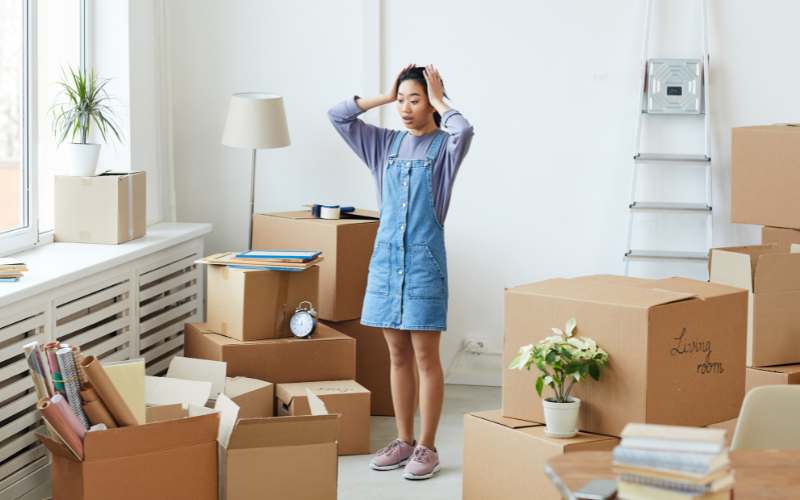
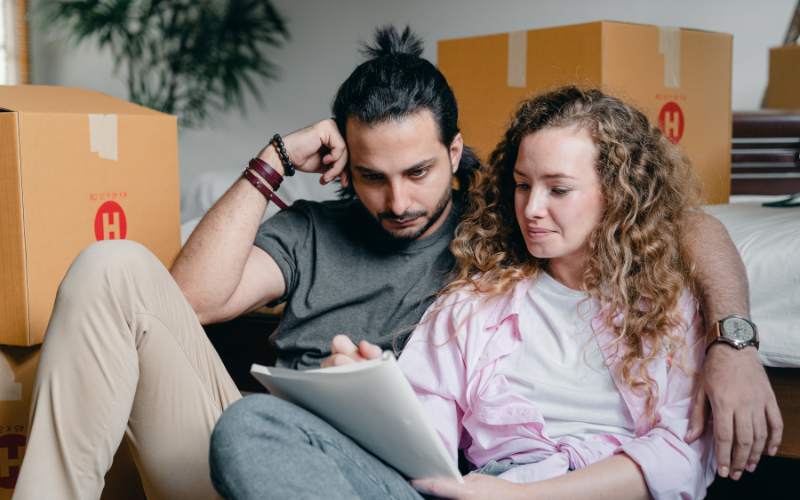
 And don't forget to make your reservation early. At the month's end and during the summer, good movers in Melbourne are in high demand.
And don't forget to make your reservation early. At the month's end and during the summer, good movers in Melbourne are in high demand.
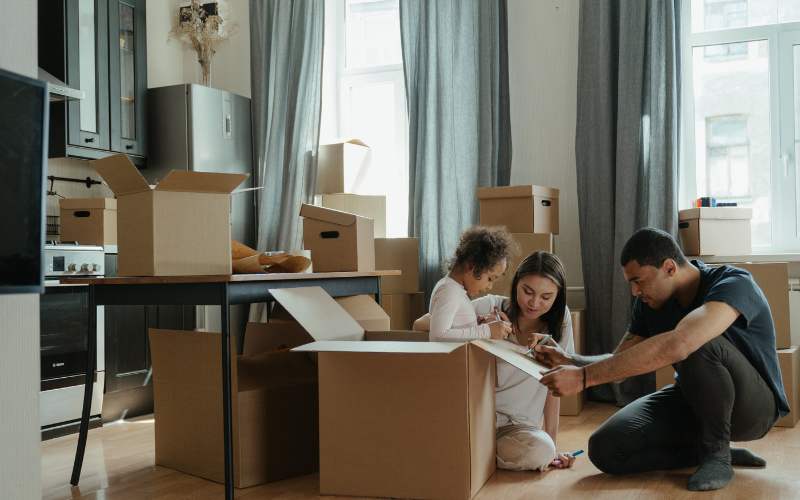
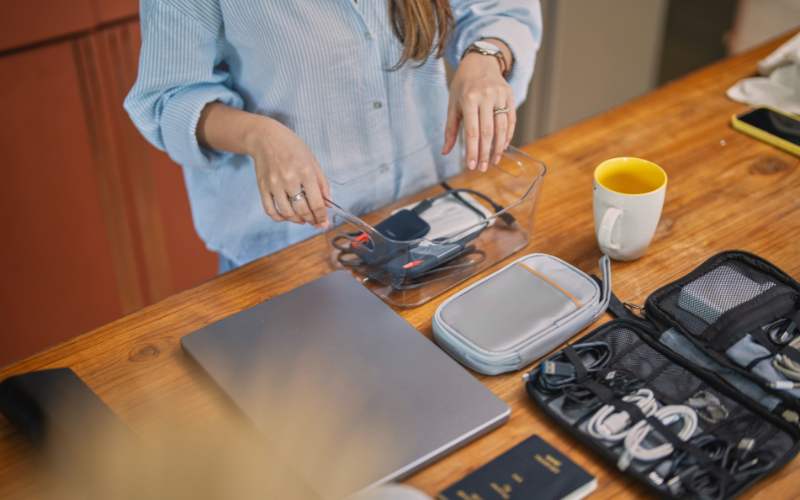
Why Moving While Working Full-Time is So Challenging
It might be hard to find the time and energy to pack up a whole house when you have meetings, deadlines, and personal responsibilities. Most full-time professionals are already busy, and moving might make them even busier, which can lead to burnout rapidly. People typically make decisions too quickly when they don't plan ahead. For example, they can choose house movers without doing any research, pack up in a messy style, or miss important things like changing their address. To prevent misunderstanding at the last minute, it is crucial to have a plan in place.
Why Choosing the Right House Movers in Melbourne Matters
A skilled and expert Melbourne removalist crew doesn't simply move boxes; they also assist you in getting less work done. If you work full-time, you need movers who are on time, adaptable, and able to handle the minutiae so you don't have to micromanage every step of the move. You will get more than just transportation with the right removalists in Werribee and nearby suburbs. You will feel better, save time, and have a much easier time moving into your new home.Steps on Moving House in Melbourne While Working Full-Time
Step 1: Planning Things Earlier is Always Better
When you're working full-time and attempting to organise a move, time is your most valuable resource. Avoid putting things off till the last minute. You should focus on the following throughout the first week:- Make sure you know when you're relocating.
- Look into Melbourne moving firms and acquire quotes from more than one.
- If you need to, ask for time off work.
- Get rid of items in your house one room at a time.

Step 2: Choose the Right House Movers in Melbourne
Not all house movers are the same. You don't have time to deal with delays, no-shows, or broken furniture when you have to get work done, get to meetings, and meet deadlines. When making a list of possible house moving companies:- Look for Google reviews with real client feedback.
- Enquire whether they offer moves on weekends or after hours.
- Make sure they have insurance and know how to handle fragile things.
Step 3: Book a Weekend or After-Hours Move
If you can't take time off work, plan your move over a weekend or after work hours. Most of the time, the best Melbourne house movers will let you choose when to book. You only have to ask. You might have to pay a little more for off-peak hours, but the stress relief is usually worth it. And don't forget to make your reservation early. At the month's end and during the summer, good movers in Melbourne are in high demand.
And don't forget to make your reservation early. At the month's end and during the summer, good movers in Melbourne are in high demand.
Step 4: Declutter and Pack Smart
When you're short on time, packing smart is the most important thing. Start with:- Pack clothes and linens that you don't need right away.
- Store your gadgets and papers in a designated, secure box.
- Wrap fragile things carefully and make sure the boxes are easy to read.
Step 5: Use Your Evenings Wisely
If you and your partner both work full-time, weeknights are great. Here's a brief strategy for the five nights before you move:- Monday: Sort and pack wardrobe items.
- Tuesday: Declutter kitchen and pantry.
- Wednesday: Pack living room and electronics.
- Thursday: Label and organise all boxes.
- Friday: Prep essentials for moving day.

Step 6: Label Everything Like a Pro
This may seem simple, but excellent labelling may save you a lot of time and trouble. Instead of saying "kitchen stuff," say "Kitchen - Crockery - Fragile." If your moving company offers box tracking (some house movers in Melbourne do!), use it to the fullest. It makes unloading easier and helps you check off items as they arrive.Step 7: Get Help from Friends or Hire Professionals
It's okay to ask for aid. Friends and family can help you out by pet-sitting, babysitting, or carrying boxes. But if your schedules don't match up, it's best to contact professionals. We offer full-service solutions at Saresa, such as taking things apart, packaging them, unpacking them, and storing them. That's just what full-time workers need.Step 8: Prepare an Essentials Box
The day you move is busy. Don't get caught looking through boxes for your toothbrush. Your basics package should have:- Chargers
- Medications
- Toiletries
- Two changes of clothes
- Important documents
- Coffee and snacks

Step 9: Update All Your Addresses Early
It's easy to forget to update your address when you're busy with work and moving. Update:- Utilities and internet
- Bank and billing addresses
- Driver's licence and electoral roll
- Work HR records
Step 10: Don’t Move Everything – Use Storage
When you move from a big house to a smaller one or an apartment, don't bring everything with you. When you don't know what to keep, short-term storage can save your life. Some Melbourne removalist companies offer storage services as part of their packages, so you don't have to deal with more than one company.Maximise Efficiency with the Right Support
The success or failure of your relocation can hinge on your choice of support staff. Opting for experienced house movers in Melbourne that understand the pressures of moving while working means you can hand off the hard portions with confidence. Local pros can help you save time, energy, and headaches whether you need help packing, moving big furniture, or doing the whole removal process.Final Thoughts
It's hard to move house while working full-time, but it's possible. The key? Making plans ahead of time, employing the right people, and breaking projects down into smaller parts. You can move into your new house without becoming burned out if you hire a reliable removalist and have a good strategy. If you're in your living room at the moment and there are boxes all about you, this is where you should start. Take the first step and let the pros do the work. Need help with your next move? Contact Saresa for expert, flexible, and stress-free moving services in Melbourne.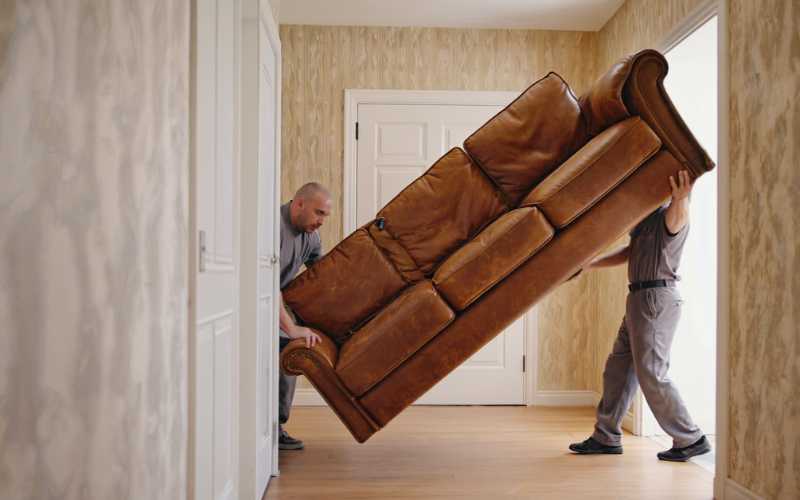
28 Aug, 2025
Moving Sofa Through a Narrow Doorway Without Damage
"Moving furniture causes more than 40% of damage, not using it every day." That one number tells you everything. Most of the scratches, dents, and ripped upholstery don't come from years of sitting; they occur from moving furniture from one home to another in a single day. Such costly errors are caused by the sofa.
We've all been there: trying to get a couch through a doorway that suddenly seems too small. You push, tug, twist, and turn, and you might even think about cutting off a limb (don't!). What looks like an easy job can soon develop into a series of mistakes or, worse, an expensive accident.
This is exactly where professional movers in Melbourne come in. Experienced furniture movers know how to go through tiny corridors, narrow doorways, and tricky staircases without leaving a mark on your walls or your favourite sofa. This is not something you can do on a Saturday when you're in a hurry. They don't just provide muscle; they also bring skill, tools, and the ability to stay cool and solve problems that comes with moving hundreds of times.
But let's be real. In this article, We’'ll show you clever, step-by-step ways to get your couch through a tiny door without hurting it. You will learn the best approach to prepare, measure, take apart, protect, and move your furniture. We will also tell you when it's better to let professional furniture movers take over. Sometimes, hiring pros isn't just about making things easier; it's also about protecting your investment.
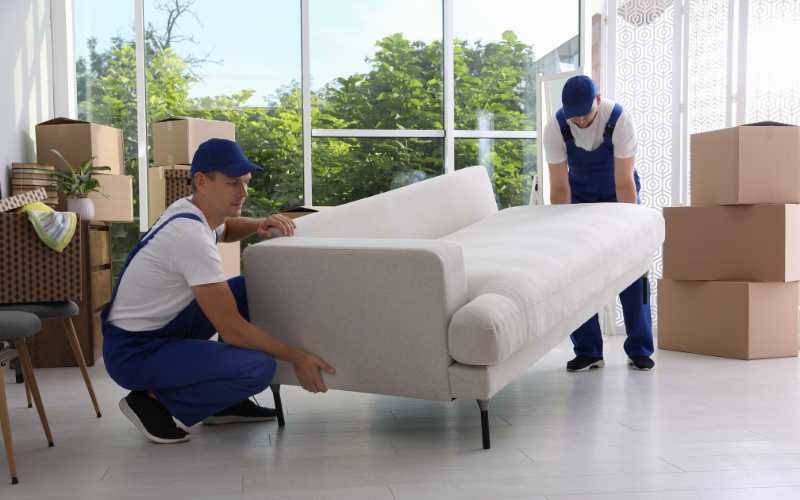
Step 1: Measure Everything Twice
Get a tape measure before you even think about lifting. This one step saves you hours of trouble.- Measure the sofa: Length, width, height, and depth. Don't forget to include any pieces that stick out, like arms or legs.
- Measure the doorway: The height and the width. Also, think about the door frame or moulding if it has one.
- Check the angles: Measure the space to turn if there is a corridor in front of or behind the door.
- Pro tip: Sofas usually fit better when they are tilted at an angle. You can tell if your couch will fit through the door by comparing its diagonal measurement to the diagonal clearance of the door.
This is exactly the kind of examination that professional furniture removalists in Hoppers Crossing, or nearby areas routinely undertake before they move. They don't leave anything to chance, and you shouldn't either.
Step 2: Prepare the Sofa (and the Space)
Don't worry if the couch is broader than your door. Start by taking it apart into its tiniest parts.- Take off the arms and legs that come off.
- Remove the covers and cushions.
- Look for screws or clips that are hidden and let you take things apart.
Next, get the area ready. Get rid of rugs, mats, or anything else that could trip you up. If you need to, remove the door off its hinges for a short while. It's a quick job that can offer you those extra centimetres you need. This is a time when furniture movers in Yarraville or anywhere in Melbourne really shine. They know which couches can be taken apart easily and which ones need extra tools. They'll bring screwdrivers, Allen keys, protective blankets, and floor coverings-things that most DIY movers forget about until it's too late.
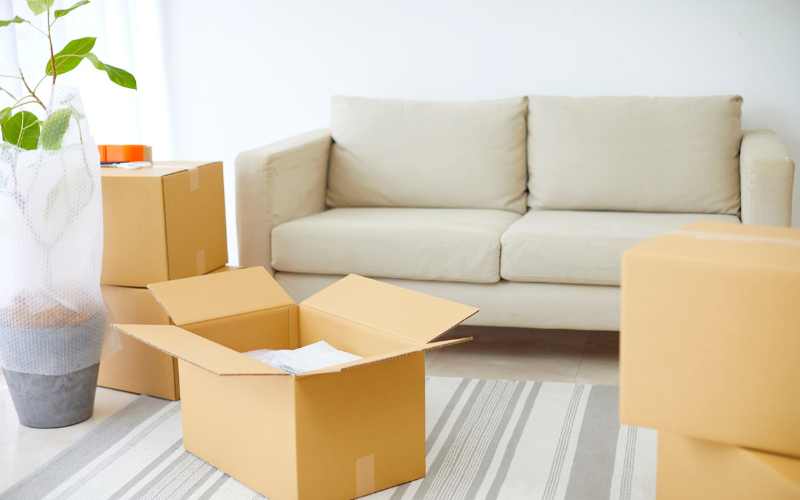
Step 3: Protect the Sofa and Your Home
This is where a lot of people go wrong. They push the couch through too quickly, which leaves them with scratched walls, chipped paint, or ripped fabric. Instead:- Cover the couch with moving blankets or stretch wrap.
- To keep fabric edges from getting caught, tape them down.
- If you have them, use corner protectors.
- To keep scratches from happening, put cardboard or towels around the edges of the door.
Step 4: Learn the Right Moving Techniques
This is where skill comes in. You don't have to use brute force to get a big couch through a small door; it's just physics and angles.- The vertical tilt: If the ceiling is high enough, stand the sofa on its end and slide it through vertically.
- The hook move: Put the sofa at an angle so that it looks like a "L" and turn it around the door frame.
- Diagonal entry: To get the back of the sofa through first, tilt it diagonally and then turn the base through.
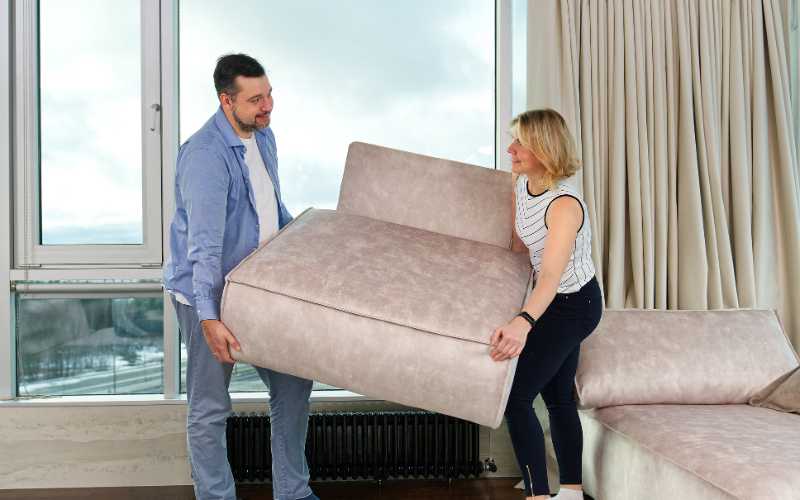
Step 5: Know When to Call Removalists
The truth is that sometimes, no amount of do-it-yourself work will help. And that's fine. That's why there are professional movers. Call furniture removalists if:- The couch is old, costs a lot, or has sentimental value.
- The door is either too small or too angled.
- You have to deal with a lot of tight turns, stairs, or elevators.
- You lack the strength and the appropriate equipment to complete the task.
- You already tried and failed.
Common Mistakes to Avoid
- Not taking measurements first. Guessing is a sure way to fail.
- Making the sofa work. Stop and think if it doesn't fit.
- Not wearing protection. Rough walls against bare fabric = damage.
- Not planning the way. Always clear the way before you lift.
- Going by yourself. Two people are needed for safety.
The Value of Professional Furniture Removalists
Moving a couch through a narrow doorway is a classic example of something that seems easy but isn't. Yes, you might be able to do it on your own if you measure carefully, take things apart, and protect them. But if you care about your furniture, your walls, and your stress levels, it's usually better to hire professional movers.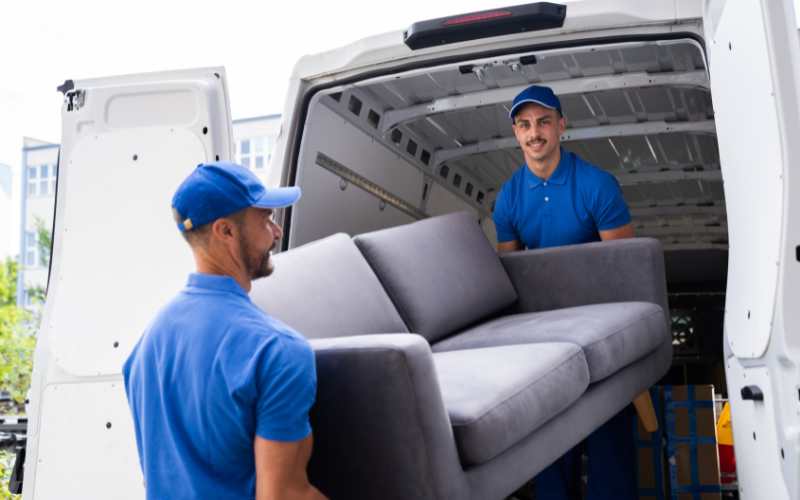 Not only do furniture movers have the physical strength to do the job, but they also have the knowledge, tools, and insurance to make sure your move goes well. They've dealt with every problem, every door, and every couch before. They see solving your "impossible" move as just part of the job.
Not only do furniture movers have the physical strength to do the job, but they also have the knowledge, tools, and insurance to make sure your move goes well. They've dealt with every problem, every door, and every couch before. They see solving your "impossible" move as just part of the job.
Final Thoughts
Moving is difficult enough, so avoid arguing with a couch that won't go away. The good news? You don't have to put yourself in danger or break things to get it done. You can get through even the narrowest door with the right planning, some smart tricks, and, if necessary, the help of professional furniture movers.
Don't panic the next time you see a couch that won't fit. Measure, get ready, protect, and move carefully. And if you're not sure, trust the experts. The right movers, like Saresa can make the hardest part of your move the easiest part of your day.

